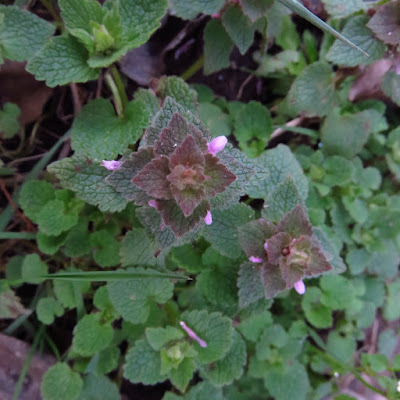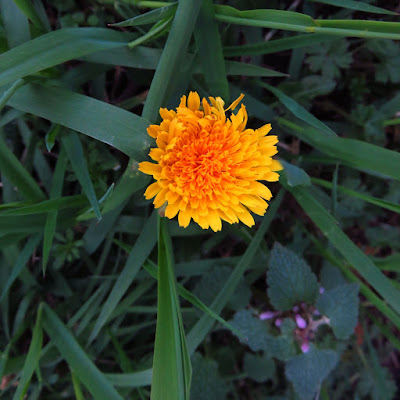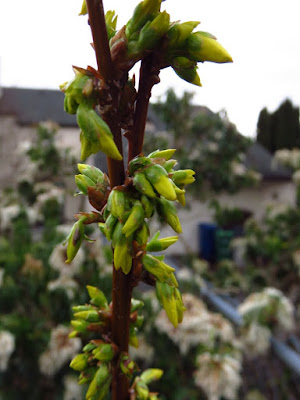 |
| Zinnias |
I had some success with seed starting last year, so trying again this year - just for fun, nothing that I couldn't buy starts or just start outdoors later if I need to. I expanded my setup but that's now mainly outdoors. Indoors I'm still using my bay window area, which gets as much natural light as is possible in a house.
 |
| Seed starting window |
The forget me nots are not doing well, I think they need to be planted directly outside; everything else is ok. It has been really rainy and dark this year, so I'm sure they would benefit from artificial lights - but that's more than I want to get into. Surprisingly, the zinnias look the best and they were planted last.
 |
| Top: cedar sage; middle: zinnias; bottom: aquilegia |
Outdoors, I'm experimenting with modified winter sowing. I don't have an easy supply of plastic containers, we don't buy gallons of milk or two liter soda bottles. But I came across a discussion about using "row shelter accelerators" from gardeners.com. They're basically sturdy row covers, but with mesh tops to let in water, and they fold up for storage.
 |
| Winter sowing setup |
In the fall, I had started two flats of native seeds: harebell, beargrass, Roemer's fescue, Indian paintbrush, camas, iris tenax, large leafed lupine, fireweed and milkweed - plus non-native blue poppies. I've read that native seeds will grow better if planted in the fall, but I didn't want to leave them to the mercy of the rabbits, birds and slugs.
I initially covered each of them with a second nursery tray, to keep out the pests but let in light and water. That let in too much water because I accidentally left them in an area where water drips down from the second floor balcony. But, at least some survived.
 |
| Fall planted seeds at the top and bottom |
When I got the row shelter accelerators, I put the flat of native seeds under one, and planted more of the same seeds. Then added rock cress, forget me nots, cedar sage, Jupiter's beard, peony poppies, foxglove, hollyhocks, aquilegia and zinnias.
Most of the seeds planted in the winter (February) are doing better than those planted in the fall. I'm excited that the fall planted camas are coming up though.
 |
| Winter planted seeds |
 |
| Winter planted lupine |
 |
| Fall planted camas |
Now the trick will be how to slowly remove the covers, since I can't take the normal winter sowing approach of poking larger holes in the top. I'm appreciating how little work this has been so far though!












































